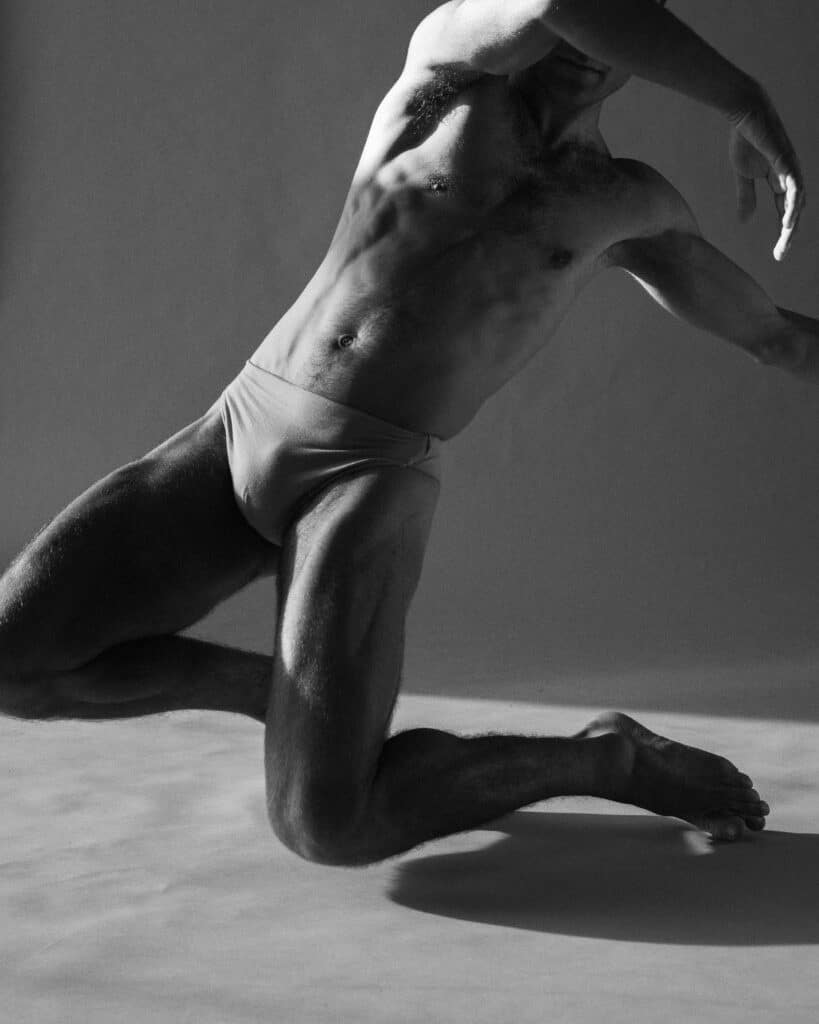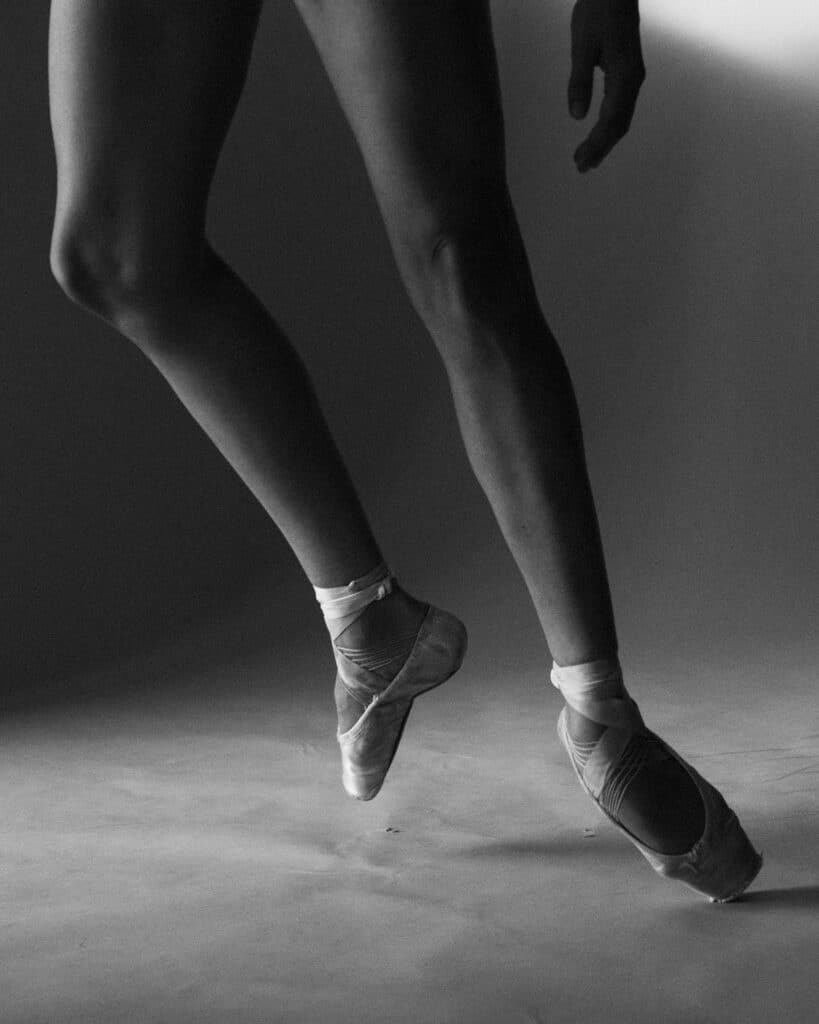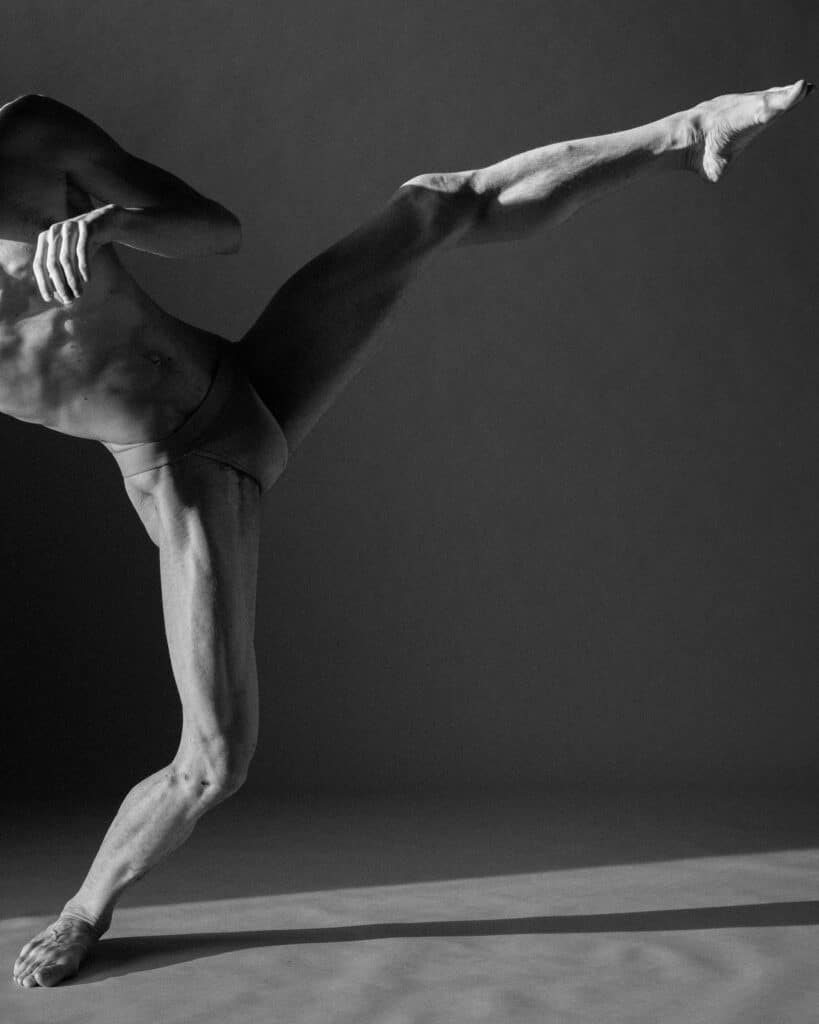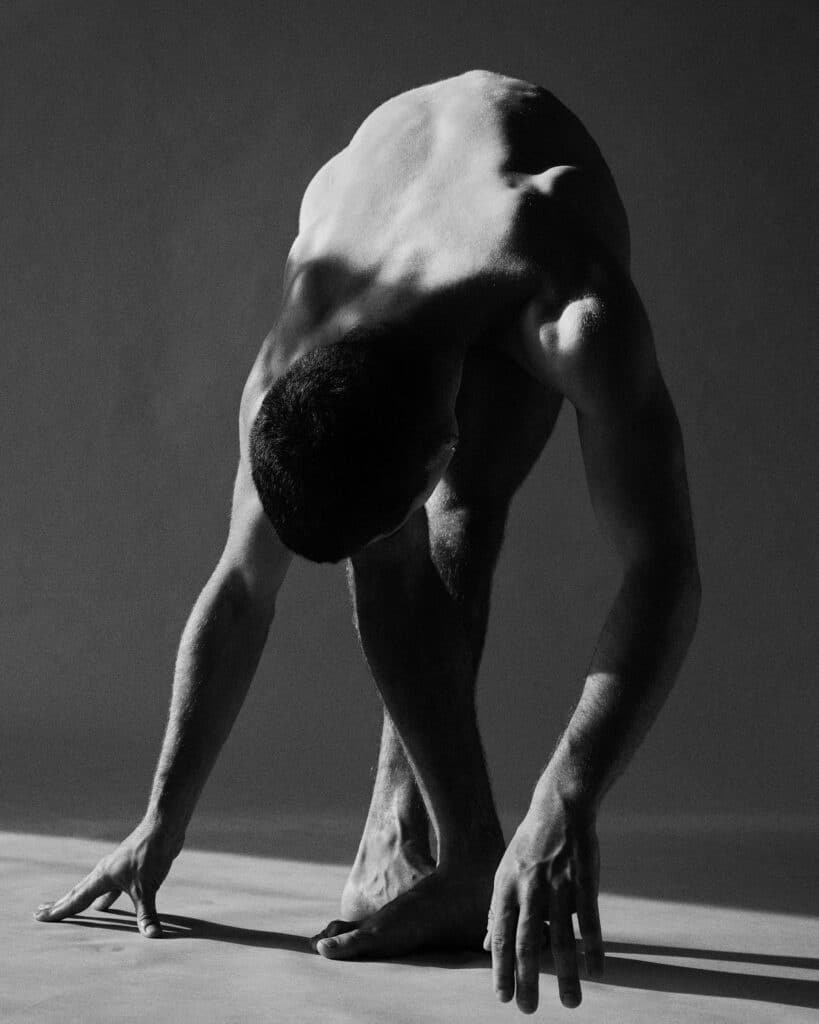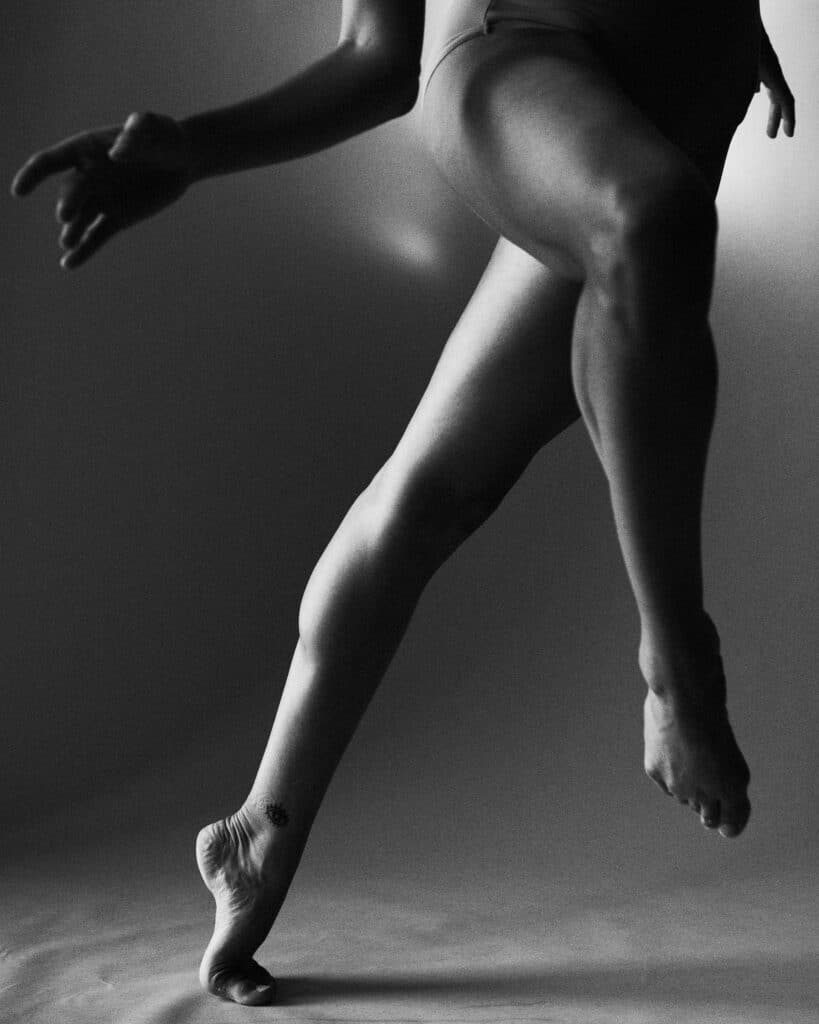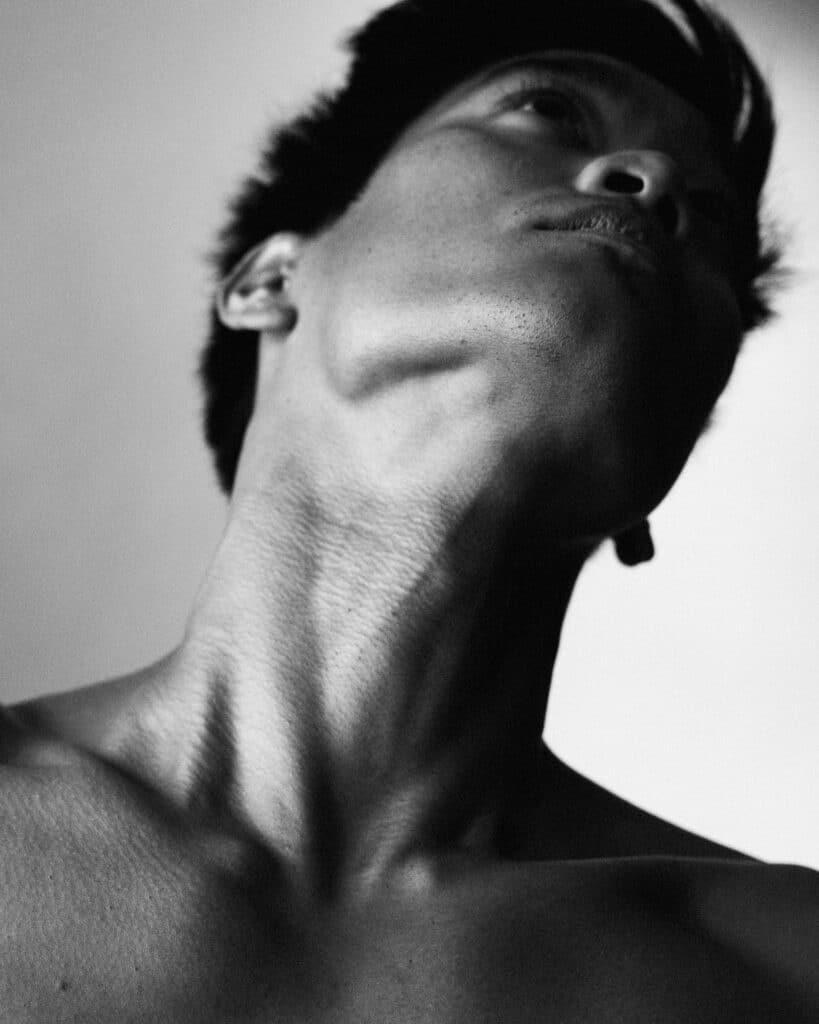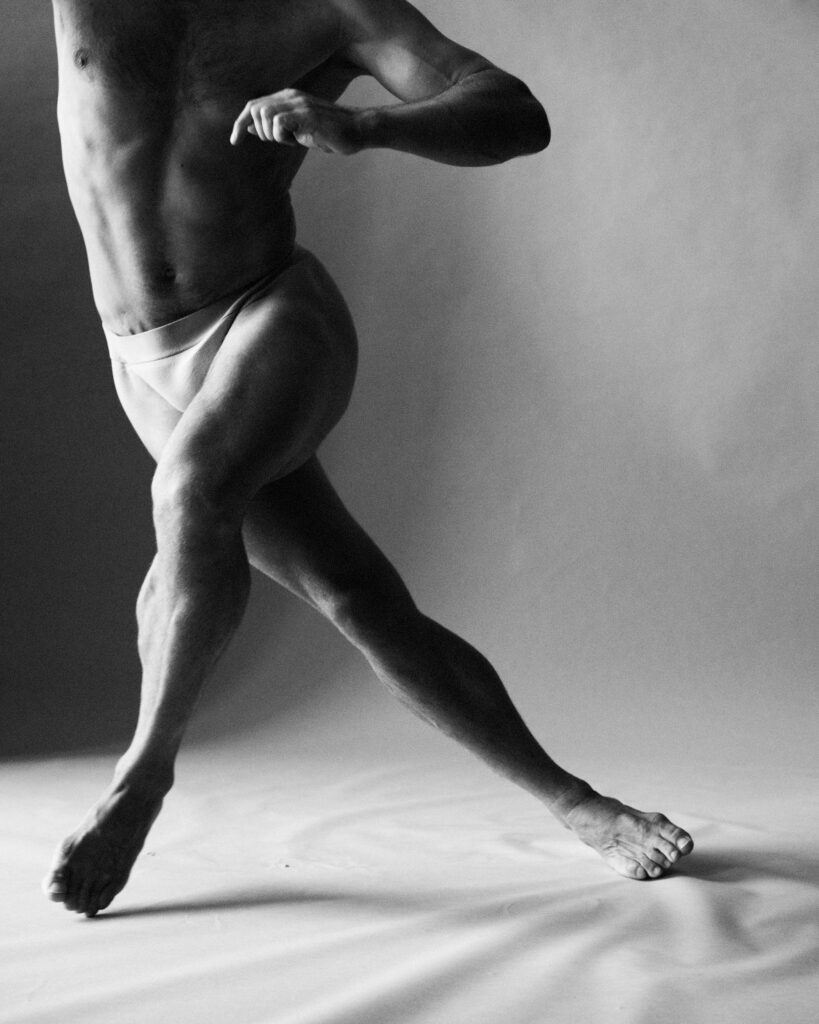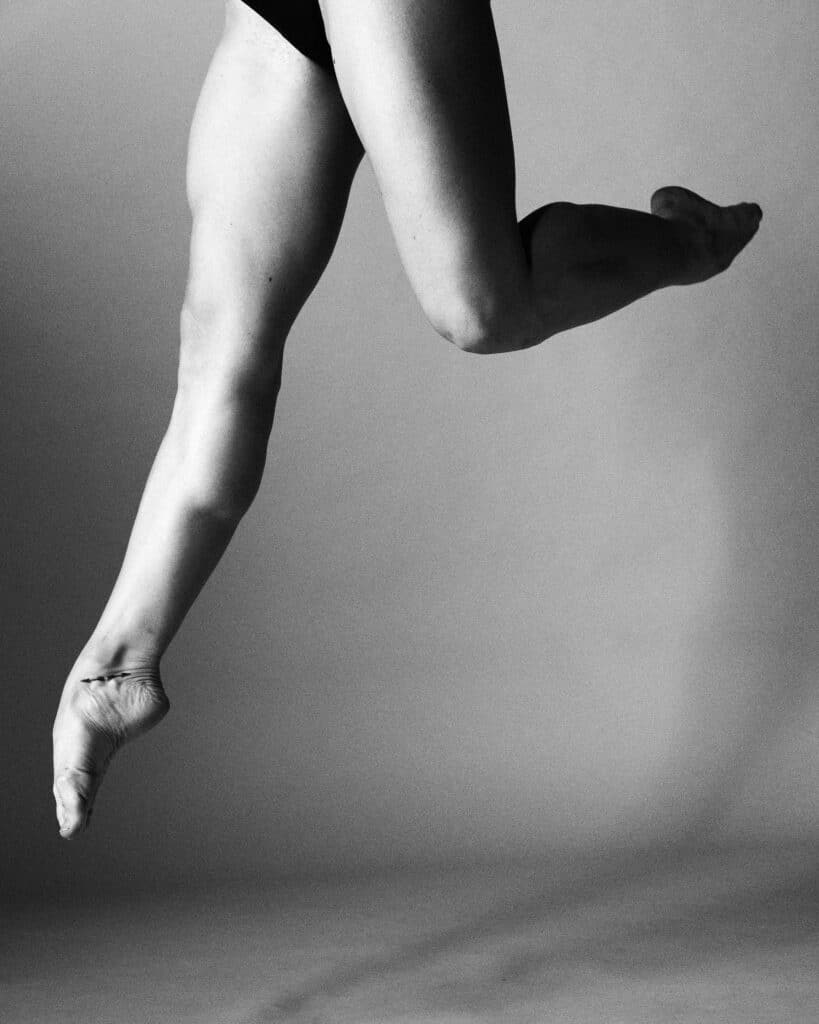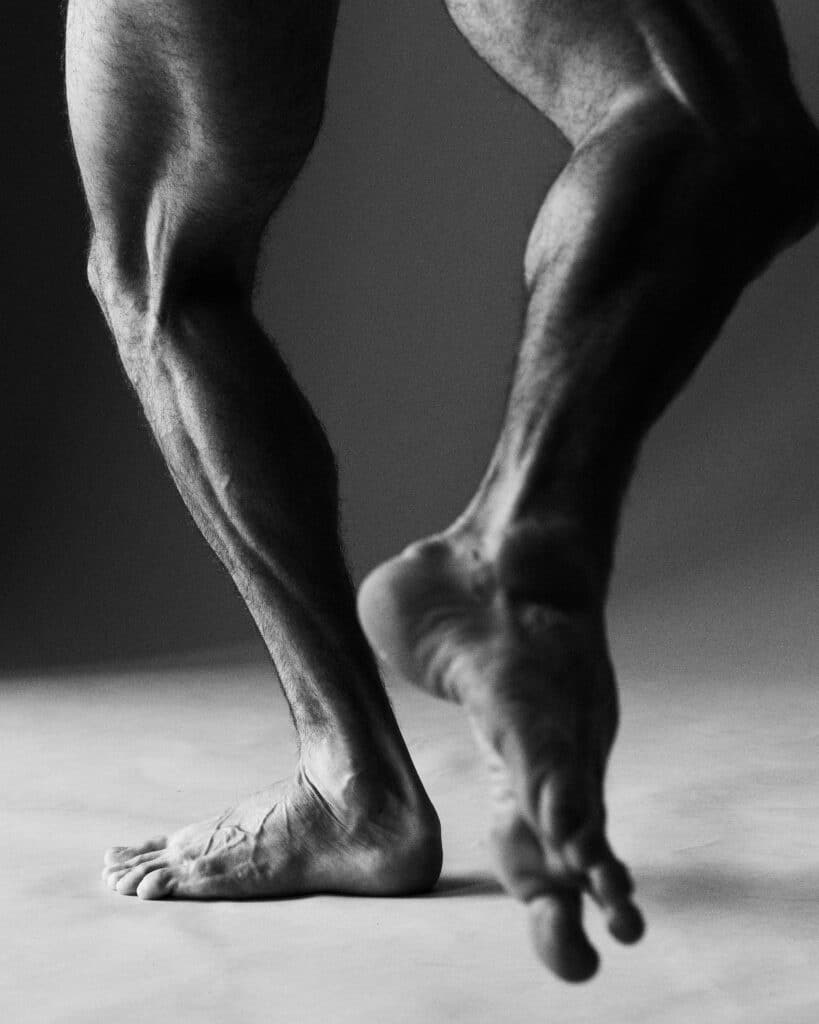When he’s not on a skateboard or surfboard, Raphaël Gianelli-Meriano, 46, divides his time between photography and making commercials and documentary films. One example is The Kaplinski System (2011), dedicated to the Estonian poet and philosopher Jaan Kaplinski (1941–2021), in which stirring images accompany the poet’s searing words.
His secret? The art of approach. Raphaël Gianelli-Meriano doesn’t besiege his subjects or try to control them. Dazzling the audience is not his thing; he prefers the time of the encounter.
We met for the first time this summer in Biarritz, at La Coupole, one of the resort town’s most welcoming cafés, just round the corner from the Casino Municipal, with its rows of slot machines downstairs and a culture venue upstairs. Casino’s Salon Diane is hosting Corps de Ballet, a major exhibition devoted to the Malandain Ballet Biarritz, Centre Chorégraphique National. The ballet employs twenty-two permanent dancers, and enjoys a loyal following both in the Basque country and abroad. Gianelli-Meriano spent two years with the troupe, even as he was beginning to work in Paris on Élévation. The series is one of several devoted to the Corps de Ballet. It centers specifically on the dancers’ legs, taking advantage of the “non-uniform” natural light from the large windows at the Théâtre de Chaillot.
How did you approach this carte blanche with Malandain Ballet Biarriz?
I am not familiar with the dance world, although I had glimpses of it when I was at the music conservatory in Valence, and dancers were never far away. I thought about it using one of my familiar tools, the skateboard, which has a certain kinship with dance in terms of movement, balance, and aesthetics. I didn’t want refined, stylized gestures, but I wanted to keep it classic, with recognizable codes. No perfection, then, but a lot of questions around the body.
I looked at Nureyev captured by Richard Avedon, how powerful that portrait is, and Nureyev himself, his incredibly muscular legs, his energetic body, his elegance. That spoke to me.
The Ballet has twenty-two dancers. Did you have them pose individually?
Yes, individually, each dancer for twenty minutes.
And what did you have them do?
I asked them to demonstrate a position or movement that they liked best or one they would do instinctively. I was attentive, trying to capture that instant when something shifts. That instant when the image is born…
Do you always know what you want before shooting?
I learn what I want as I go along. I can’t tell in advance we are going to work this way or that way, or draw a picture, but I often have a vision, so I can say, “Voilà!” This is it!
And what surprised you most about these dancers?
Their way of being in the world, how they communicate with their bodies. This language thrills me. And the analogy with skateboarding is that they demand the unthinkable from their bodies. On tour, they go out clubbing… Whenever they can, they dance. Like skateboarders returning from a competition: you stop at the gas station, people feel worn out, but then they see the sidewalk, and you think, c’mon, that’s enough for today, but in fact they start up again…
Dancers are artists; life, like art, is in their veins. Thierry Malandain, the choreographer at the MBB, has chosen a diverse range of personalities, none of whom is like the others. This was palpable the first time I photographed them.
You have no stage shots?
Never when they’re on stage and in their performance gear. What interests me is the body at work, what happens before and after. The stage is for the audience and the encounter that follows.
Are you an efficient photographer?
There’s a certain inefficiency in the way I work. I recently saw Helen Levitt and Henri Cartier-Bresson in dialogue at the HCB Foundation. HCB is efficient, the golden ratio and so on. Levitt is inefficient, yet I place her above Cartier-Bresson. Her photos are full of magic, the magic of life. Inefficiency brings out the unexpected, what you can hope to come across and catch… And that’s what Levitt does in a rather singular way.
To gain trust, you must be inefficient. I need time, whether I’m working with Malandain dancers or Icelandic clouds. I’m never sure I’ll come away with what I should have photographed, but I accept it. I hope, one day, to be as inefficient as Helen Levitt!
Why black & white?
For the classicism of the rendering. To convey something timeless, something that belongs to each dancer and, at the same time, has been pass down to them by other generations.
Raphaël Gianelli-Meriano, Corps de ballet, Théâtre du Casino Municipal de Biarritz, salon Diane, September 8 to 17, as part of the Le Temps d’Aimer la Danse festival. Portraits of choreographers and dancers from Thierry Malandain’s collection will also be on view.

